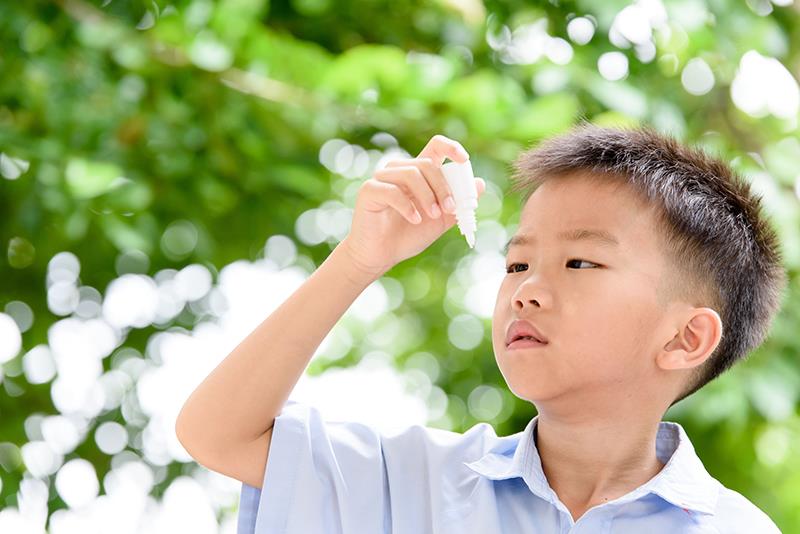Dupilumab-associated ocular surface disease less common in children, teens with AD





The incidence of ocular surface disease associated with dupilumab treatment for moderate-to-severe atopic dermatitis (AD) is lower in children and adolescents than that described in adults, suggests a retrospective review at a tertiary paediatric hospital in Singapore.
Of the 216 paediatric patients treated with dupilumab at the institution between 2019 and mid-2024, 7.4 percent developed significant symptoms of dupilumab-associated ocular surface disease (DAOSD), an incidence lower than that reported for adults in phase III trials and real-world studies of dupilumab in AD (8.6–62.1 percent). [J Dermatol Sci 2019;94:266-275; Br J Dermatol 2022;186:633-641; Br J Dermatol 2019;181:1072-1074; Br J Dermatol 2020;182:418-426]
“We speculate that the lower incidence may be secondary to our practice of prophylactically prescribing lubricant eye drops to all our patients at the initiation of dupilumab,” said lead author Dr Amanda Yap, a paediatrician at the KK Women’s and Children’s Hospital, Singapore. “This practice might also explain why dryness was a relatively rare eye presentation in our cohort (<0.5 percent) compared with that described in the literature on adults.”
Following the first three patients presenting with DAOSD who had not been offered prophylactic lubricant eye drops (18.8 percent of DAOSD cases), patients who initiated dupilumab at the institution since 2020 were routinely started on ocular lubricants during the initial 1–2 months of treatment with the interleukin-4/-13 signalling inhibitor. [Pediatr Dermatol 2024;doi:10.1111/pde.15814]
Cohort of Asian paediatric patients
The patients aged <18 years who developed DAOSD in the current single-centre experience (n=16) comprised 93.8 percent Chinese and 6.3 percent Malay. They were predominantly male (68.8 percent), with a mean age of 11 years at dupilumab initiation. None of the affected patients were aged <6 years.
Regarding known risk factors for DAOSD, these patients generally had severe AD (mean Eczema Area and Severity Index score 27.8). All of them presented with head and neck involvement, with eyelid involvement in 93.8 percent. A history of asthma as atopic comorbidity was noted in 31.3 percent, with an identical proportion having pre-existing eye conditions, most commonly allergic conjunctivitis (18.8 percent).
The median time from dupilumab initiation to the development of ocular complications was 8.5 weeks. The chief findings on examination were conjunctivitis (87.5 percent), followed by limbitis (62.5 percent) and papillary reaction (62.5 percent).
Despite presenting with eye symptoms, the patients overall had normal vision and intraocular pressure within the normal range. Moreover, vision-threatening complications such as corneal scarring and cicatricial ectropion were not observed in the cohort.
Management of DAOSD
All the patients with DAOSD were treated with artificial tears and/or carbomer eye gel. Other treatments prescribed included corticosteroid eye drops (81.3 percent), antihistamines or mast cell stabilizers (75 percent), topical tacrolimus (56.3 percent), and ciclosporin eye drops (25 percent). None of the patients required systemic treatments for their eye disease.
At the time of review, 75 percent of patients had their ocular complications resolved after a median of 14 weeks. A temporary interruption of dupilumab due to more severe DAOSD was required in 12.5 percent of cases for 2 weeks, with no recurrence of ocular complications upon restarting dupilumab. Maintenance with lubricant eye drops and/or topical calcineurin inhibitors was provided in some cases.
“Discontinuation of dupilumab in patients with DAOSD is generally avoided where possible,” added Yap. “Prophylactic use of lubricant eye drops, close monitoring, and early referral to paediatric ophthalmologists can help reduce the incidence of severe eye disease requiring discontinuation of dupilumab.”